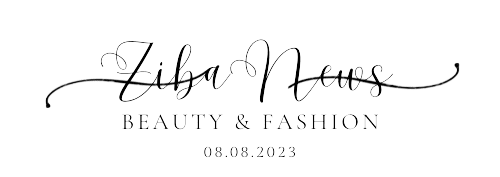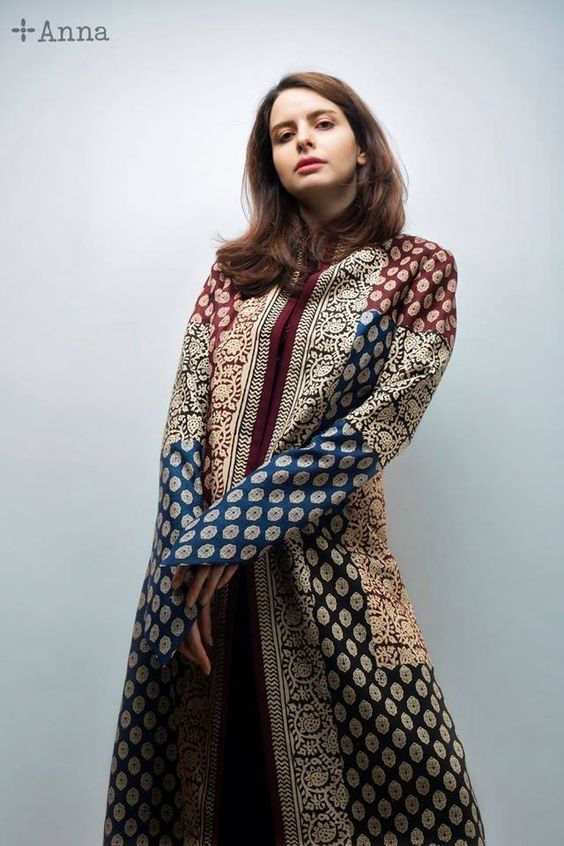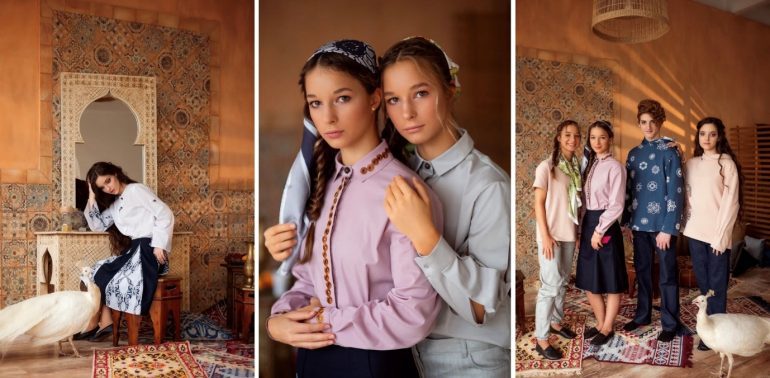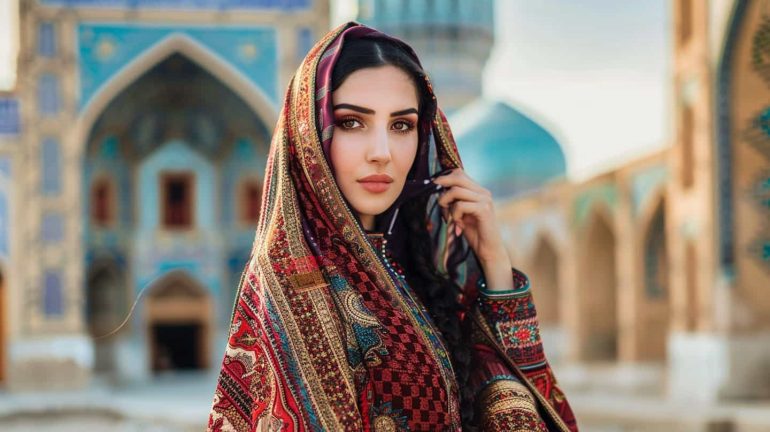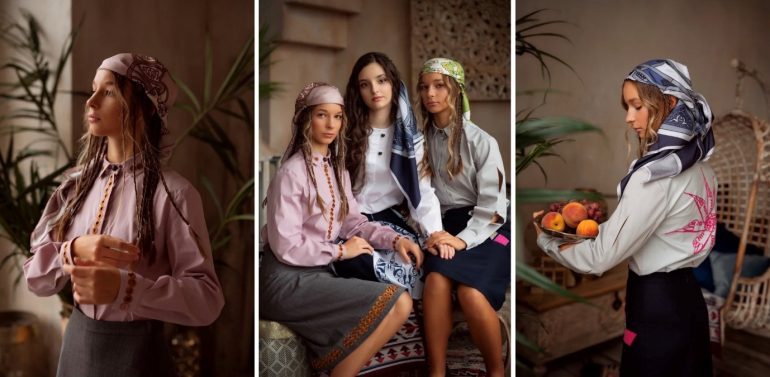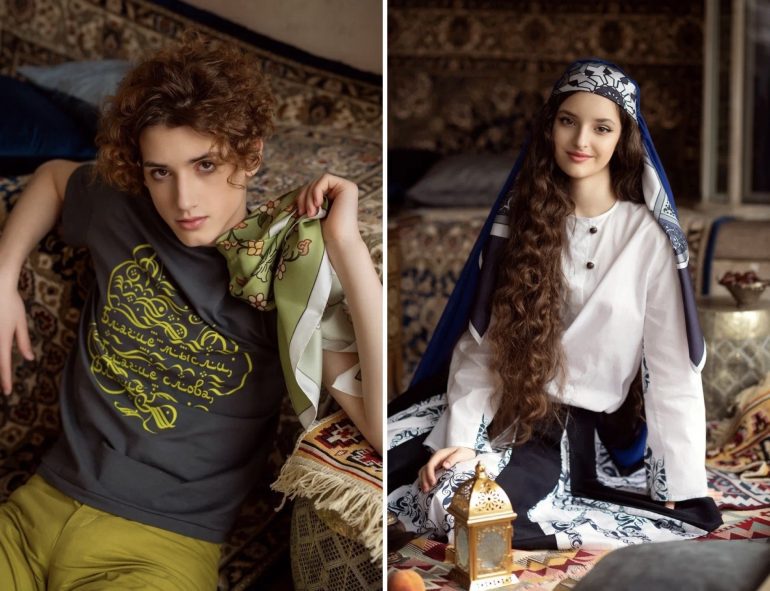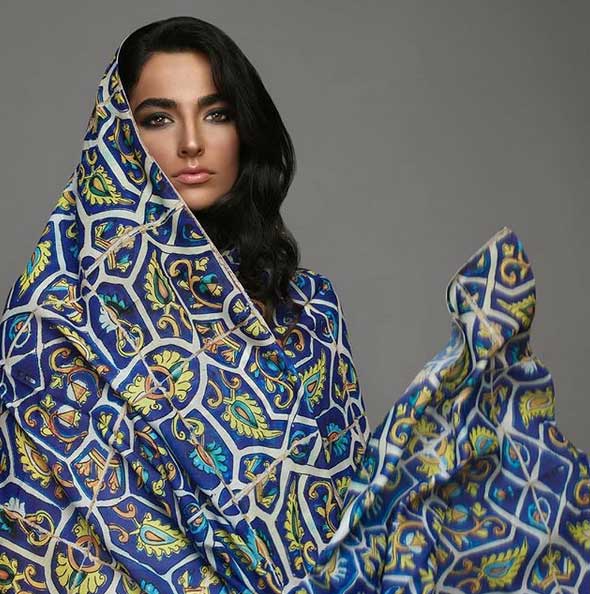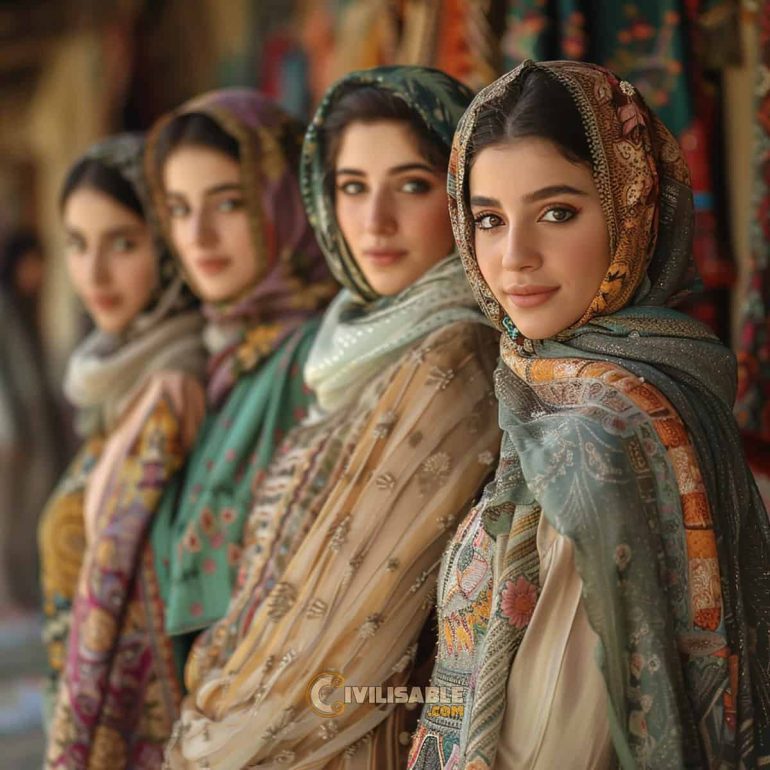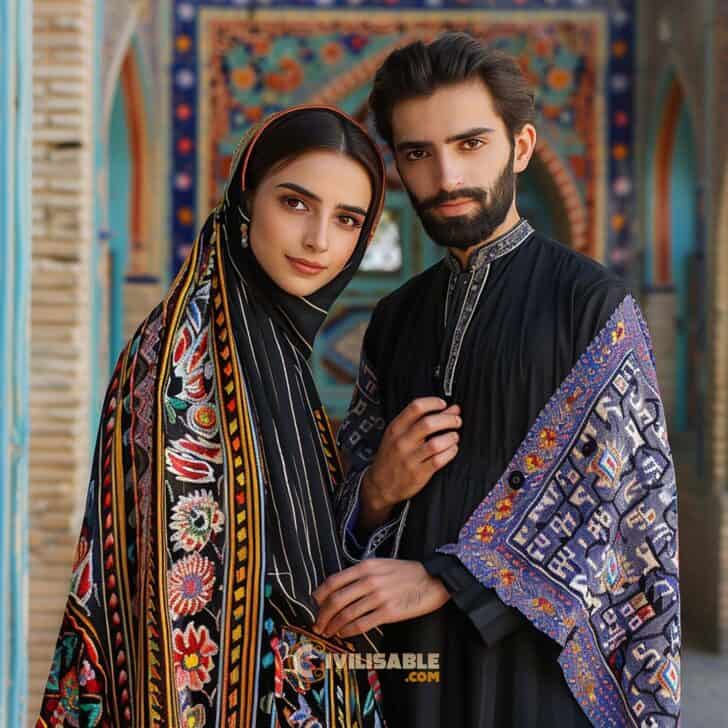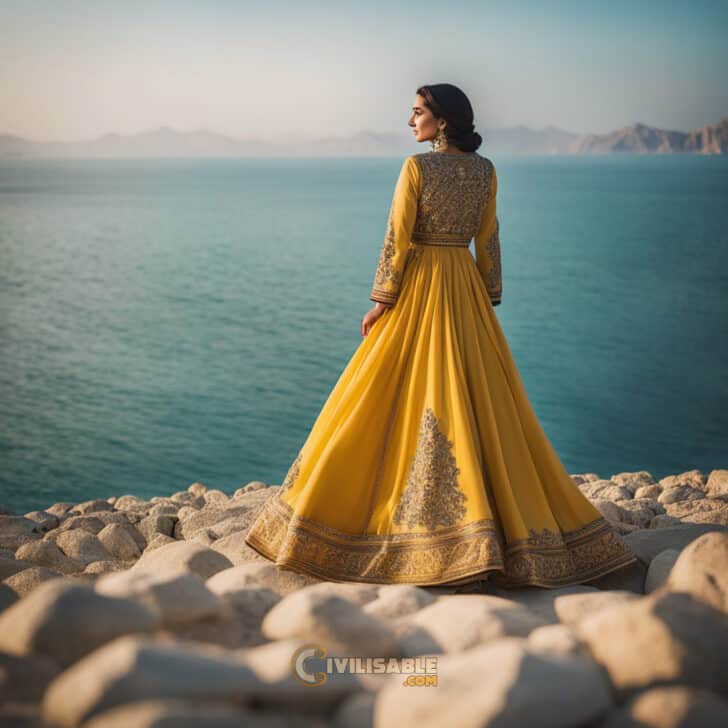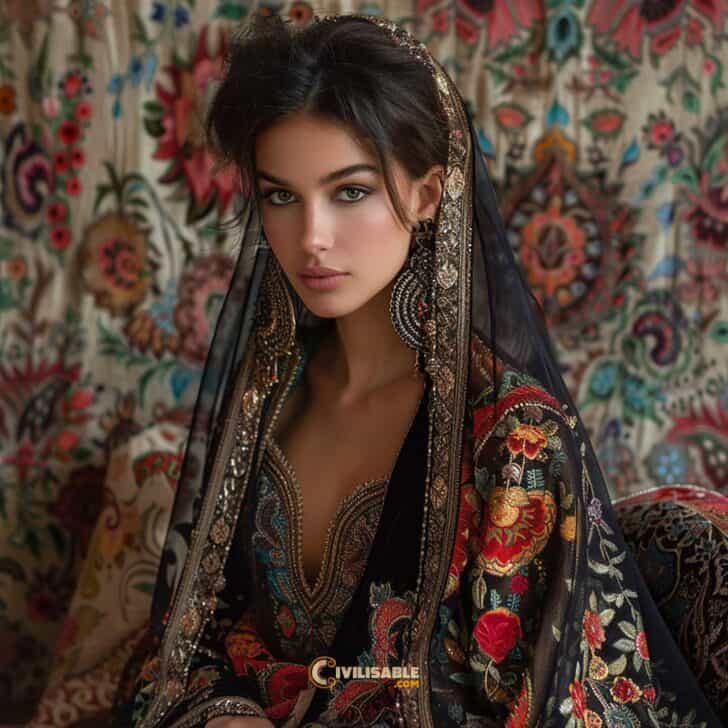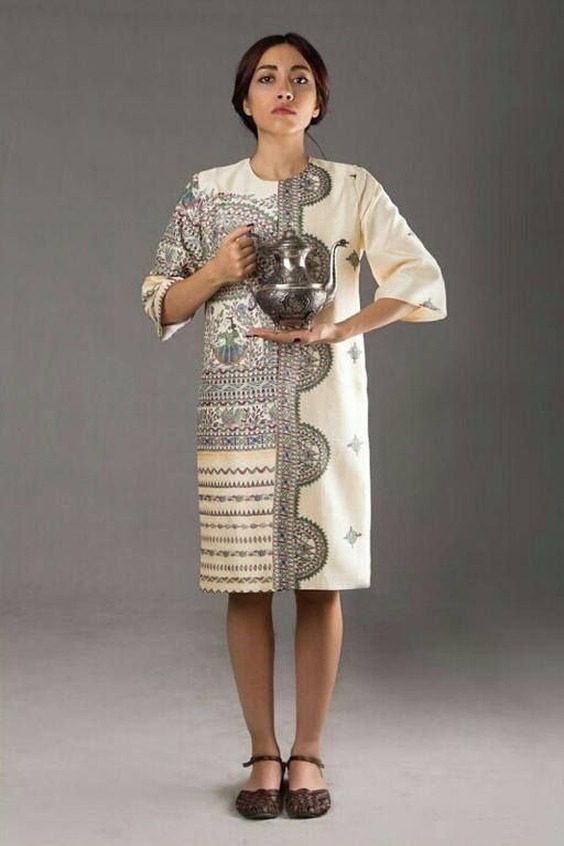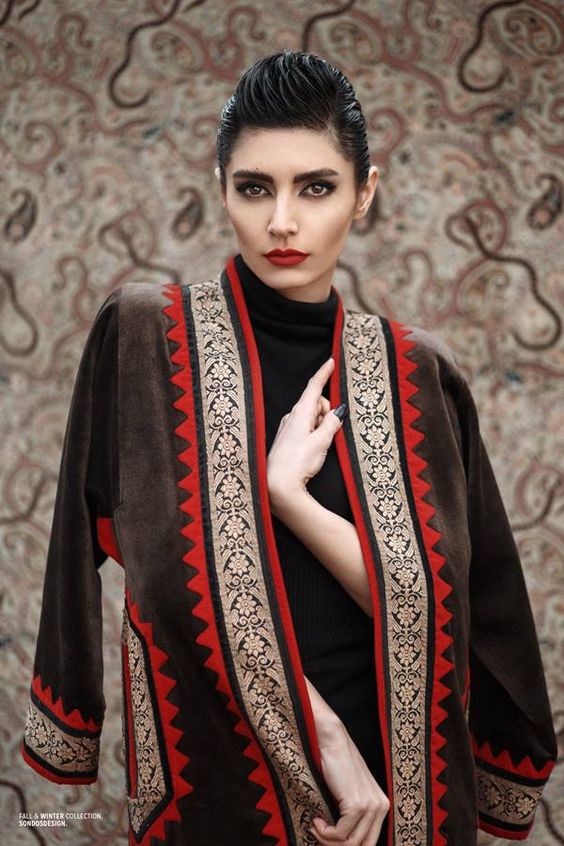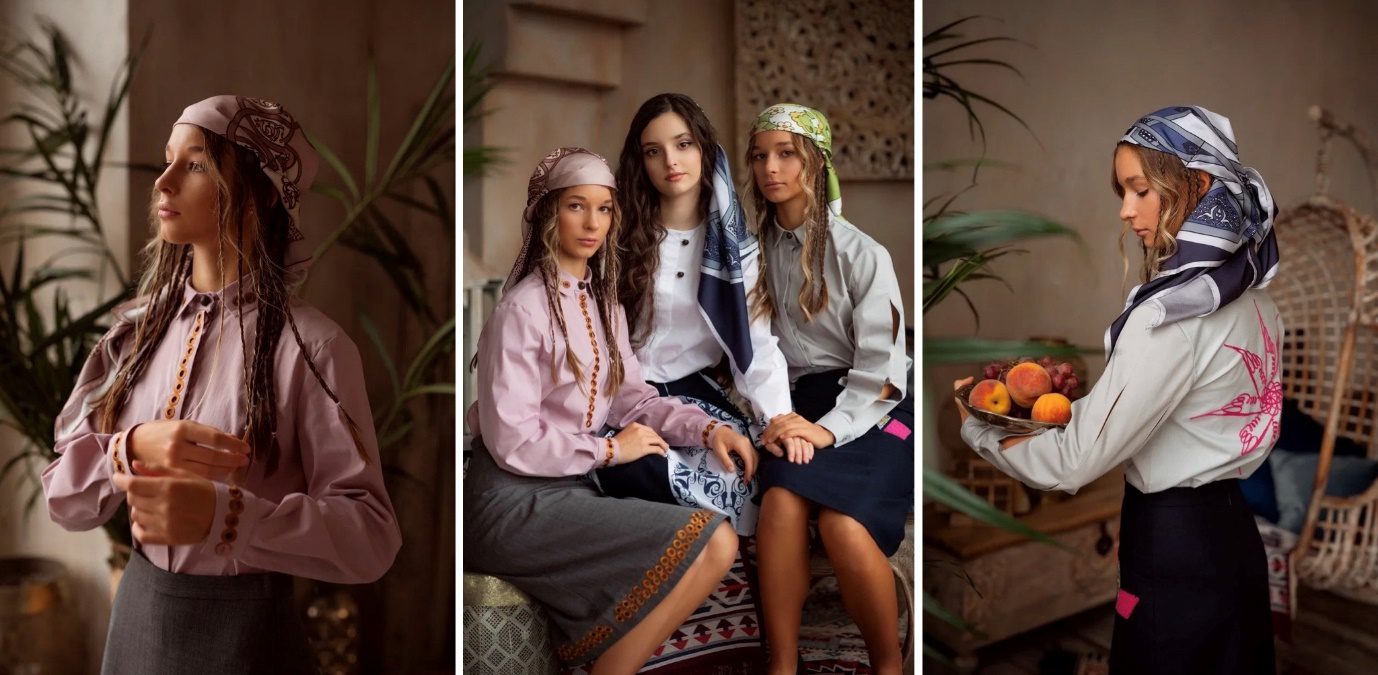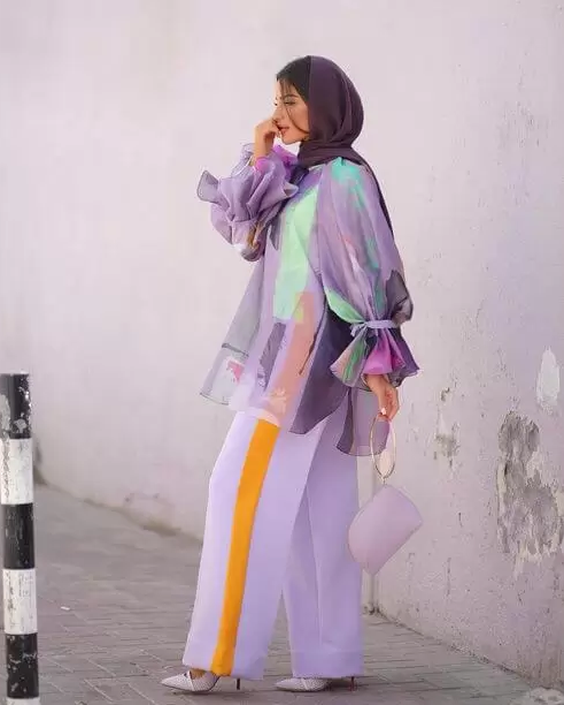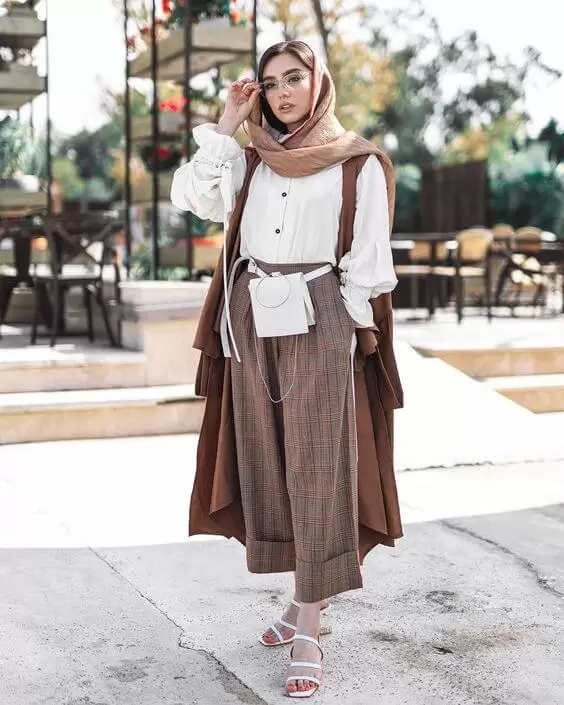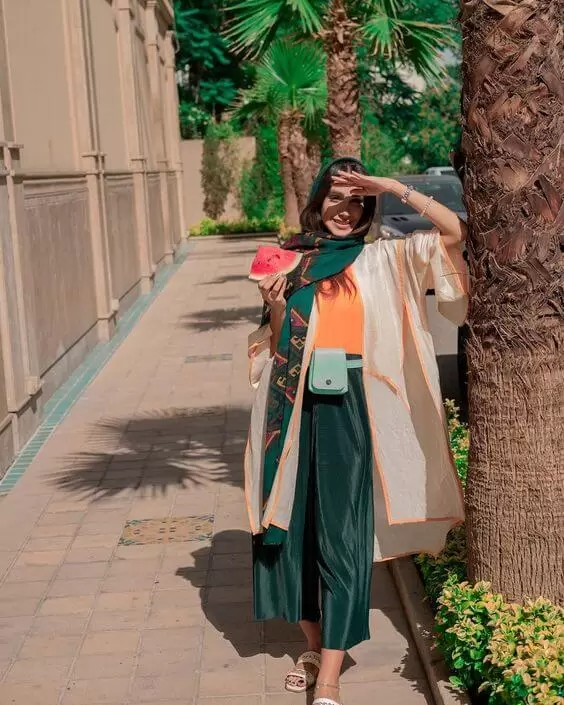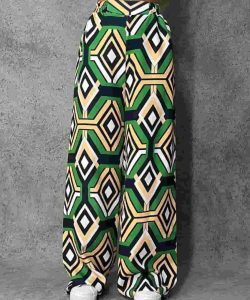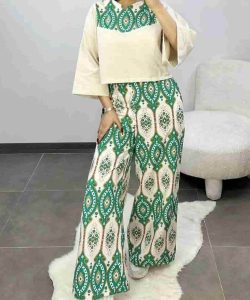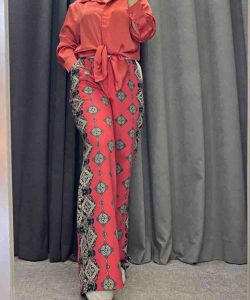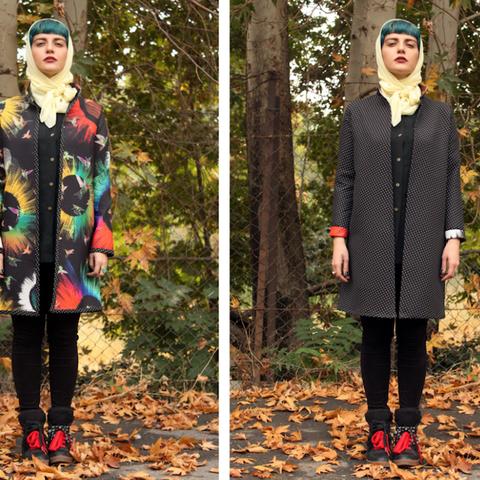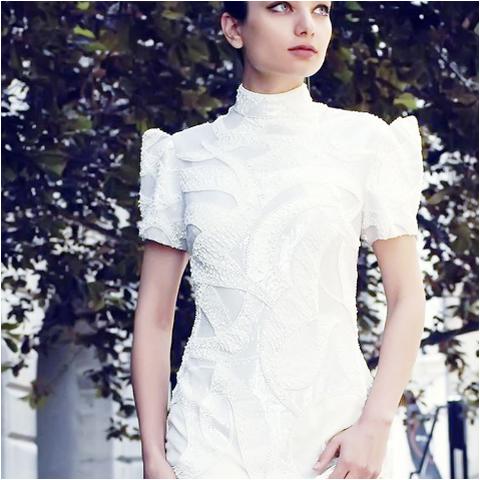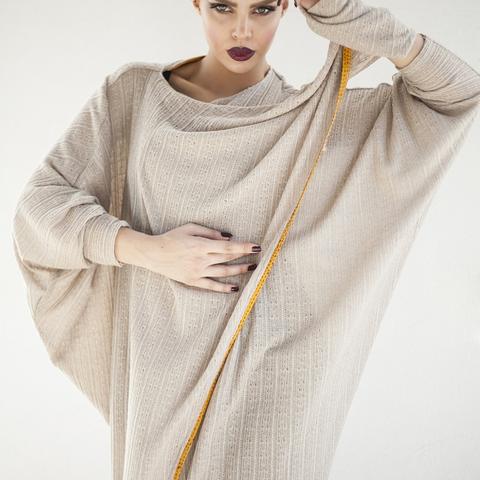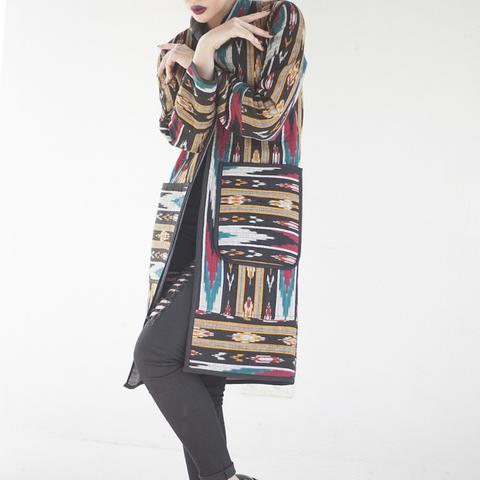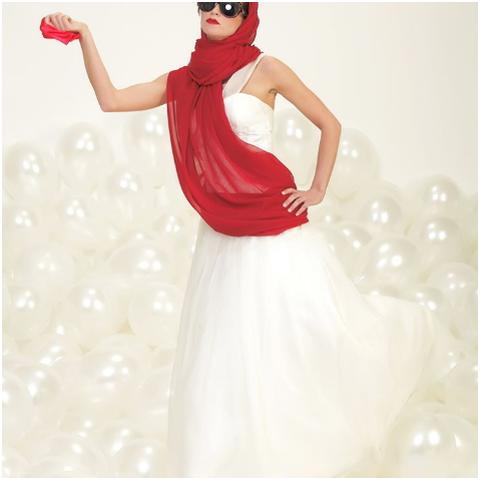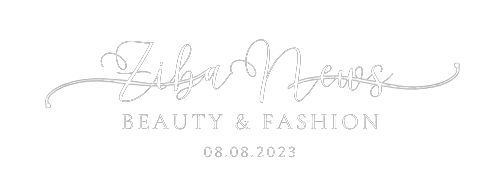Have you ever heard the term “Modern Iranian Clothes”?
Honestly, it might sound a little confusing at first, right? Most of us, when we hear Iranian clothes, immediately think of traditional outfits or the styles of different ethnic groups like Kurds, Lors, Baluchis, Azeris, Qashqais, and so on! If we stretch it a bit more, we might think of fabrics with paisley or floral patterns.
But here’s the twist: this article is going to surprise you big time! Once you see some modern Iranian fashion ideas, you might actually get shocked 😅. By the end, we’re going to answer the big question: how can you actually dress in a “modern Iranian style”? What does that even mean, and how’s it different from traditional or Islamic clothing? Let’s dive in.
فهرست
- Why even wear Iranian style? Back to the roots…
- Iranian clothing vs. Islamic clothing?
- What’s modern? What’s traditional?
- So, what’s “modern clothing”?
- So, what’s traditional Iranian clothing?
- What accessories go with traditional clothing?
- Why aren’t traditional clothes popular among the younger generation?
- The difference between modern and traditional Iranian styles
- Key Elements to Add an Iranian Touch to Your Style
- Accessories
- Manto (Long Coat)
- Pants
- Red Lines of Style in Iranian Culture?
- Best Modern Iranian Fashion Brands You Can Shop From
- Anar Design – A Blend of Heritage and Modern Vibes
- Poosh – Royal Iranian Elegance
- Arefeh Mansouri – The Designer Who Made the West Fall in Love with Iran
- Naghmeh Kiumarsi – Where Heritage Comes First
- Radaa – Style and Elegance from Shiraz
- Wrap-Up: Modern Iranian Style – Answering a Century-Old Gap
- FAQs
- What exactly is modern Iranian style?
- What makes it different from other styles?
- What pieces are common in modern Iranian style?
- How can I build a modern Iranian look?
- Which brands in Iran offer modern Iranian fashion?
- How can I use this style for different occasions?
Why even wear Iranian style? Back to the roots…
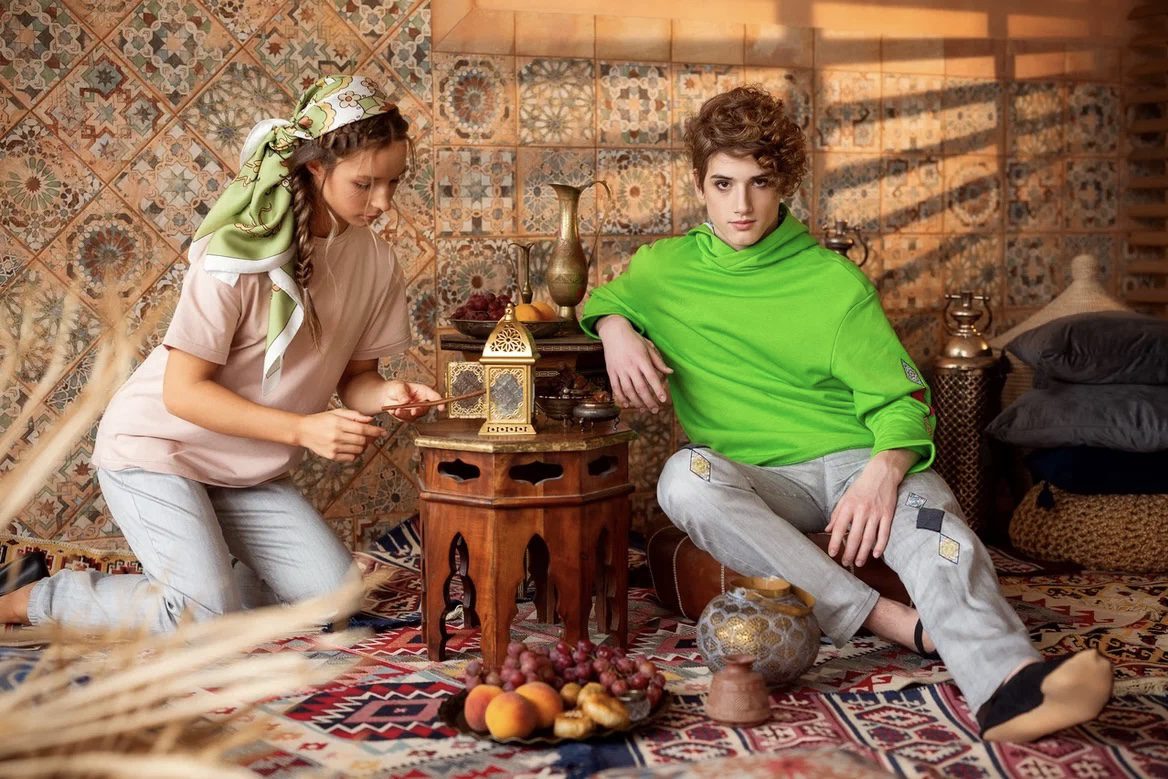
When we say “Greater Iran”, we’re actually talking about a deep civilizational concept—an area that stretches across the Iranian Plateau and even beyond. This region is where authentic Iranian culture is still alive and rooted. For thousands of years, clothing and colorful fabrics have been tied to this legacy.
Now you might be asking: with all these global styles out there, why should we still stick to Iranian fashion? Well, here are a few reasons. If you don’t find them convincing enough, feel free to drop your thoughts in the comments 😉:
- Feeling connected: Everyone wants to feel like they belong somewhere. Clothes are one way to practice that sense of belonging.
- Showing pride in our heritage: Iranian clothing reflects our rich history and culture. Wearing it is like paying respect to our ancestors and our identity.
- Flexing creativity: Iranian outfits are super diverse. From long floral dresses to Qasem-Abadi pants and Shapur hats—there are endless options to make your style unique.
- Standing out: In a world where everyone’s chasing the same brands, rocking Iranian fashion feels bold and distinctive.
- Supporting local industry: By buying Iranian clothes, you’re boosting domestic producers and fueling the local market.
- Feeling good: Wearing colorful, beautifully designed Iranian clothes can honestly boost your confidence and mood.
Iranian clothing vs. Islamic clothing?
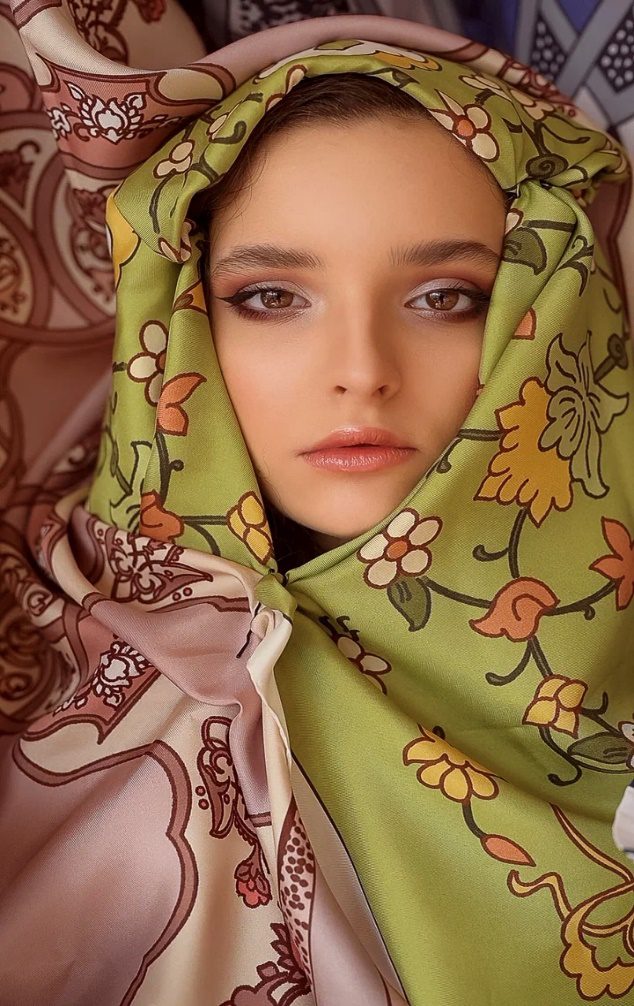 |
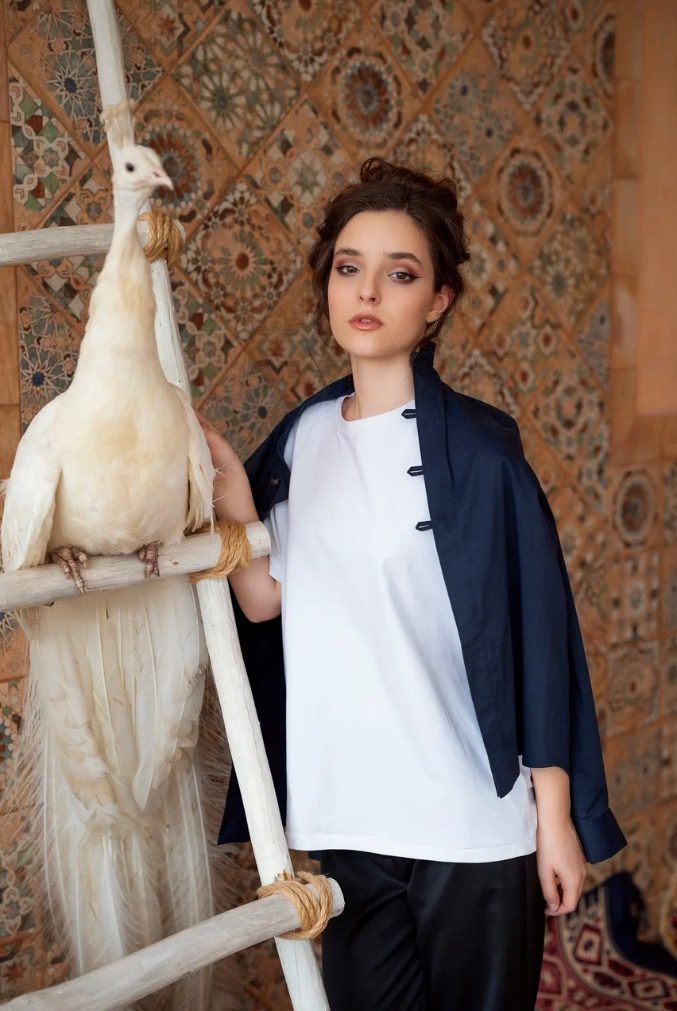 |
An example of Iranian clothing, designed with vibrant colors, cultural patterns, and unique civilizational elements.
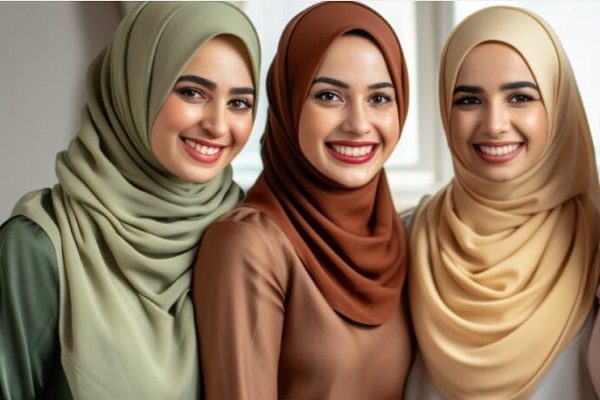 |
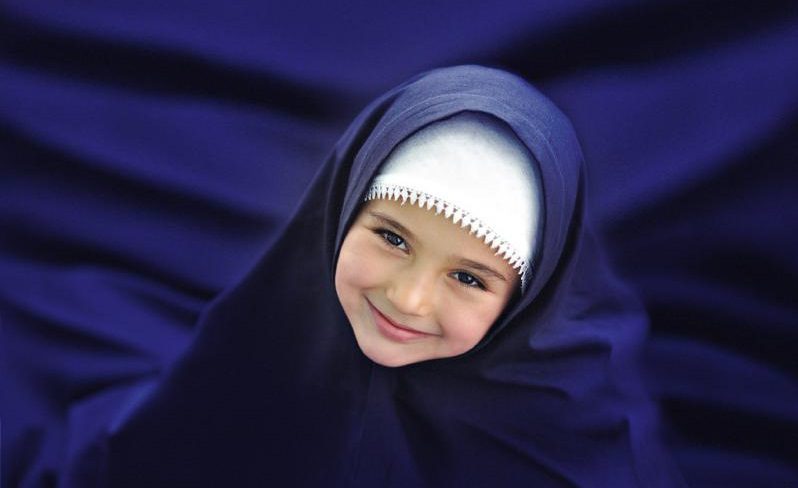 |
An example of Islamic clothing, designed to prioritize coverage and avoid drawing attention to the body’s curves.
It’s really time we drop this myth that “Iranian clothing is the same as Islamic clothing“. That’s just not true! Sure, after the arrival of Islam—over the past 1400 years—some amazing fashion ideas emerged. But don’t forget, Iran also has thousands of years of history before Islam. That means we have plenty of fashion inspiration rooted in pre-Islamic times too.
So yeah, Iranian and Islamic clothing might look similar at first glance, but there are subtle differences worth noting:
- Traditional Iranian clothing comes in way more variety—like mantos, skirts, pants, scarves, etc. Meanwhile, Islamic clothing often focuses more on chadors or long garments for maximum modesty.
- Iran’s laws lean more toward Islamic dress codes, so some traditional Iranian designs aren’t always considered “appropriate.”
- The main goal of Islamic clothing is religious and legal compliance. Iranian clothing, on the other hand, is rooted in cultural habits, customs, and personal style across centuries.
- Iranian clothes are usually super colorful and decorative, without the specific focus on hiding curves. Islamic fashion, however, emphasizes maximum concealment and avoiding attention to body shape.
That said, here’s the fun part: there’s a thin line between Iranian and Islamic styles. In fact, many Islamic outfits we see today are actually inspired by Iranian ideas and designed by creative Iranian minds.
What’s modern? What’s traditional?
Let’s clear this up: when we say modern clothing, what exactly do we mean? And when we talk about traditional clothing, which outfits are we pointing to?
So, what’s “modern clothing”?
Simply put, modern Iranian fashion is a blend of traditional Iranian elements with contemporary, global fashion vibes. This way, you get the richness of Iranian heritage and stay in tune with worldwide trends. It gives both women and men the chance to show up in society looking stylish and up-to-date.
Girls wearing modern Iranian outfits
Key features of modern Iranian fashion
- Respecting traditional designs and colors: Modern Iranian clothes often include iconic motifs and shades like arabesque, khatai, paisley, turquoise, lilac, and deep crimson. These give outfits a touch of elegance and proudly highlight Iranian identity.
- Using high-quality fabrics: Materials like silk, termeh, and wool-blends are common. They’re soft, durable, and give outfits a polished, luxurious vibe.
- Mix-and-match variety: Modern Iranian fashion can include mantos, pants, skirts, tunics, blouses, suits—you name it. This flexibility lets people choose based on their personal taste and the occasion.
- Using unique accessories: Along with modern Iranian clothes, you can also pair them with traditional Iranian accessories like bags, shoes, scarves, shawls, and jewelry. The right accessories can add elegance and charm to your whole look.
So, what’s traditional Iranian clothing?
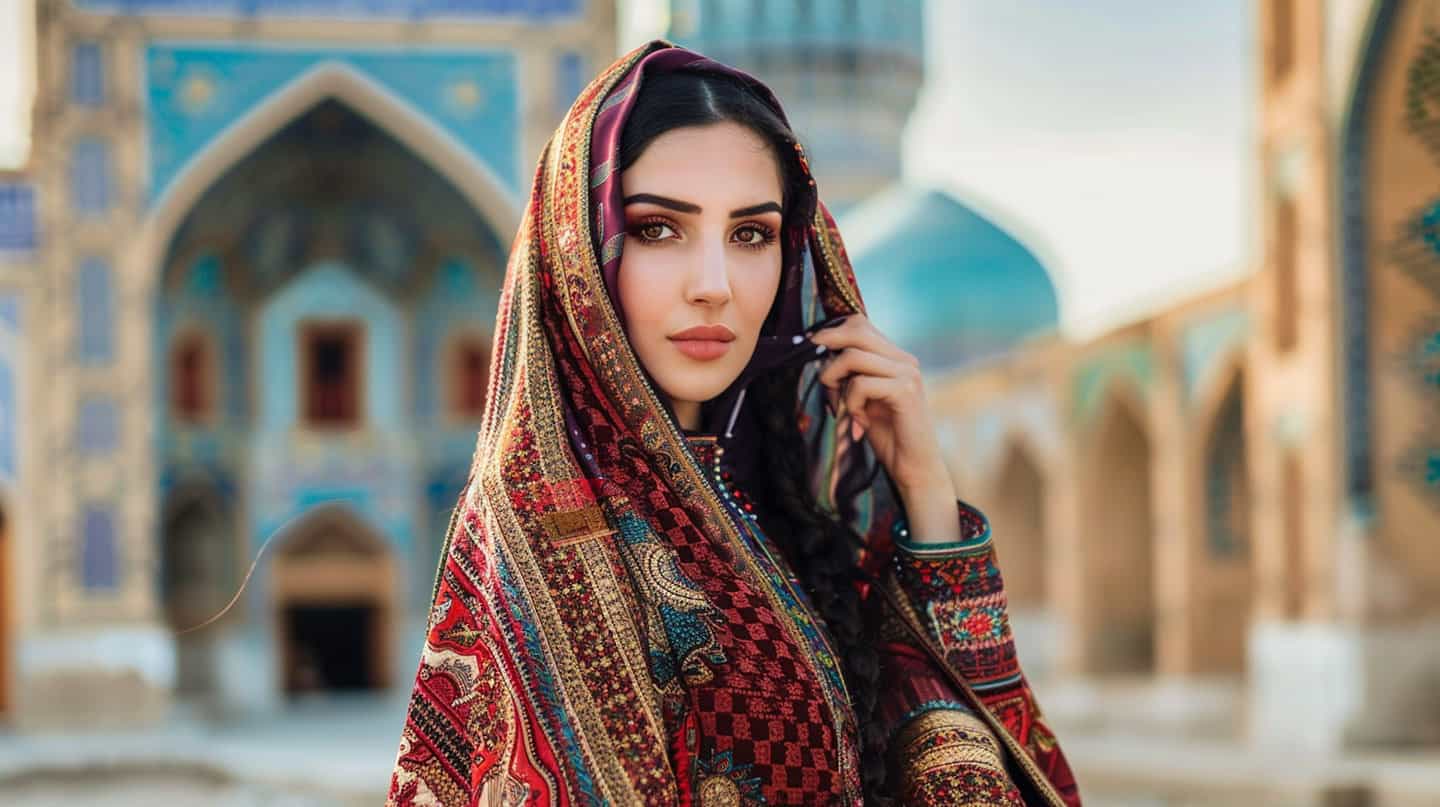
Simply put, traditional clothing refers to those outfits that you’ll often see in specific ethnic groups or villages in Iran—colorful, diverse, and eye-catching. These are the styles rooted in old Iranian fashion. Now, where did these designs even come from? Well, you’ve got to dig into Iranian history for the answers.

The truth is, ancient peoples like the Elamites, Medes, and Achaemenids played a big role in shaping the foundations of Iranian clothing. The Achaemenid Empire, under Cyrus the Great, introduced luxurious and majestic outfits decorated with precious jewelry. These garments symbolized the wealth and power of Iranian nobles.
After the Achaemenids, dynasties like the Parthians and the Sassanids also left a strong impact. The Parthians brought in things like the “tiara” (a tall, cone-shaped hat) and long draped clothing. The Sassanids enriched Iranian outfits even more with delicate patterns, vibrant colors, and expert embroidery.
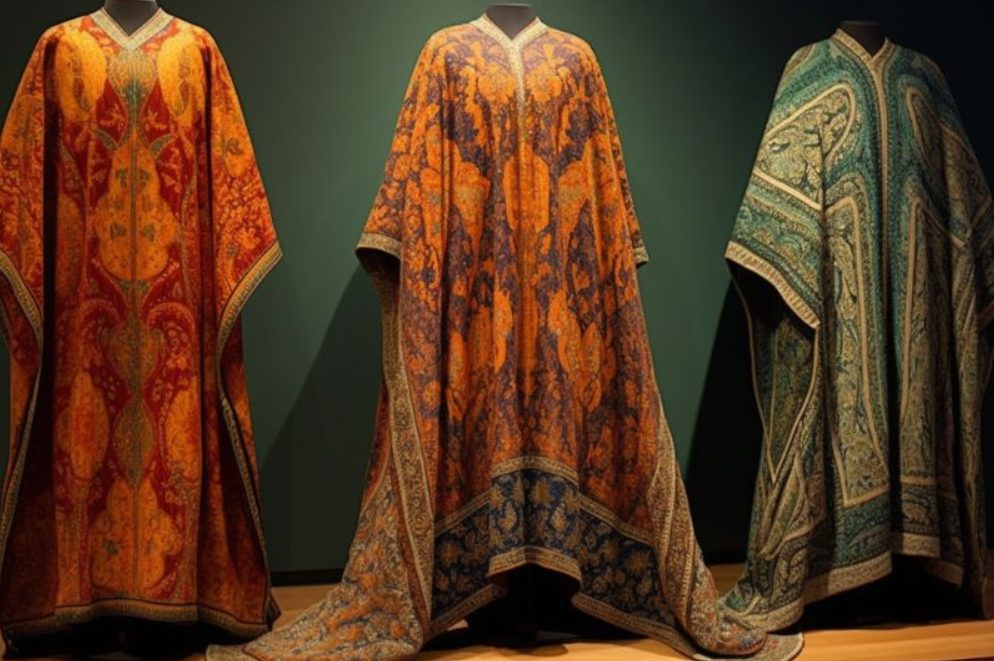
What accessories go with traditional clothing?
Traditional Iranian outfits are usually completed with lots of accessories that make them look even more stylish, cultural, and attractive. From fine jewelry to handcrafted belts, pretty scarves, and traditional shoes—these extras play a big role in completing the Iranian look.
Jewelry
Jewelry has always had a special place in Iranian culture and is an inseparable part of traditional clothing. Women often adorn themselves with delicate necklaces, bracelets, earrings, and rings. These are designed with unique motifs inspired by nature, Persian poetry, and myths. Materials like gold, silver, turquoise, and gemstones are commonly used—symbols of beauty, wealth, and spirituality.
Belts
Belts in traditional Iranian clothing are both practical and decorative. They help the outfit look more fitted and accentuate the waistline. These belts are usually made of luxury fabrics like silk (called “jim”) and decorated with embroidery, beads, or metalwork. They add a sophisticated vibe to the whole outfit.
Scarves
Scarves aren’t just for covering hair—they’re also a way to express personal style. They come in different colors, fabrics, and patterns, helping women stay within social norms while still showing off their taste. Traditional Iranian scarves often feature intricate motifs or fine embroidery, making the outfit look extra chic.
Shoes
Traditional Iranian footwear comes in many types, each suitable for specific clothes or occasions. One of the most famous is the“giveh”—a handmade, comfortable, and durable shoe made from natural materials like cotton or leather. For more formal occasions, women could go for “kolah-pich” or “papoush”, which are embroidered slippers or sandals. Men often wore“charogh”, durable leather shoes perfect for various settings.
6 traditional Iranian accessories
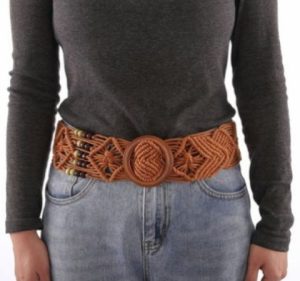 |
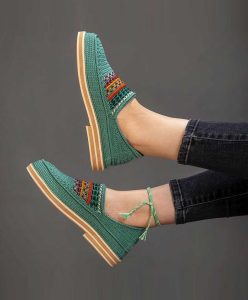 |
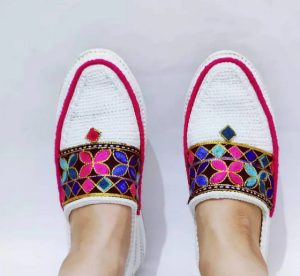 |
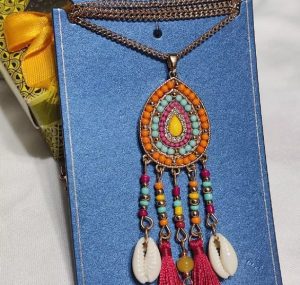 |
 |
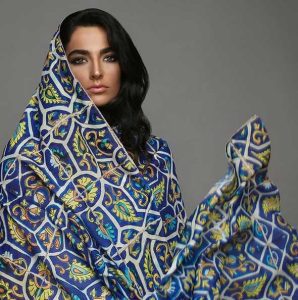 |
Why aren’t traditional clothes popular among the younger generation?

There are several reasons why traditional Iranian clothing doesn’t feel as appealing to today’s younger crowd:
- Comfort: Young people want clothes that are comfy and easy to move around in. Traditional Iranian outfits, especially for women, are often long and layered, which can feel uncomfortable in hot weather.
- Fashion trends: Global fashion is constantly changing, and the younger generation prefers staying trendy. Compared to modern clothes, traditional outfits may seem less versatile or even repetitive.
- Identity shift: Many young people want to shape their own modern identity and set themselves apart from older generations. Wearing traditional clothes might feel like holding onto old customs, while they want something more current.
That being said, modern Iranian fashion has managed to attract young people’s interest by blending traditional elements with contemporary styles—making it a much more exciting option.
The difference between modern and traditional Iranian styles
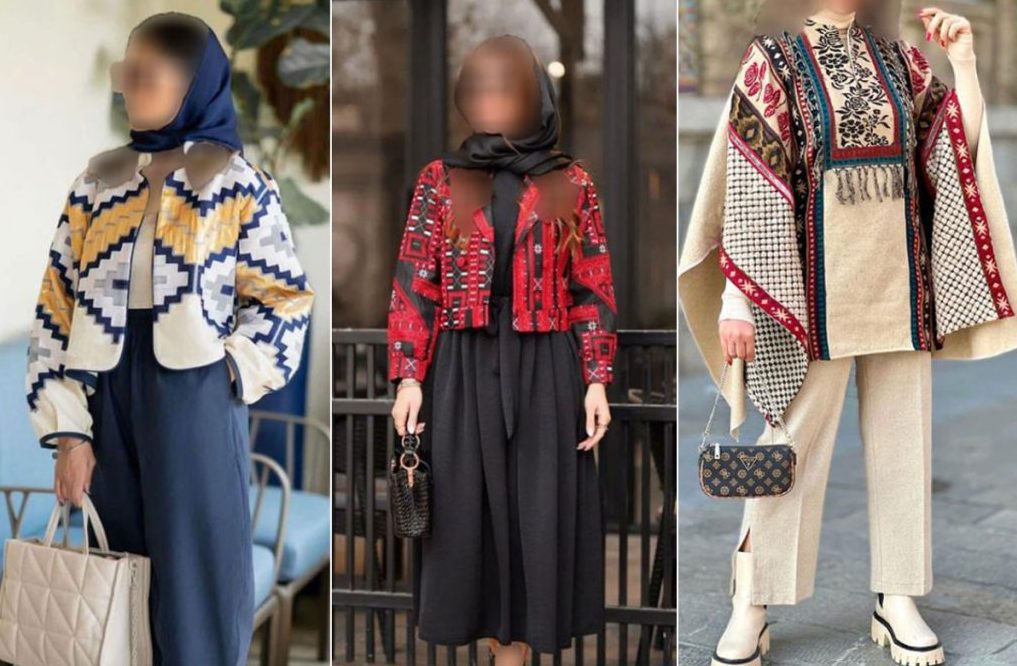
Iranian Modern Style
The modern Iranian clothing style is basically a huge revolution in traditional outfits – a big change, but a really cool one! Modern Iranian clothes are inspired by old legends and characters from Persian stories. You’ll usually spot floral patterns, geometric shapes, or traditional Persian motifs on them. The key point, though, is that these patterns and colors shouldn’t get too busy or overwhelming. Unlike traditional outfits, the modern designs try to stay more minimal and less “crowded.”
- So, what colors are usually used in modern Iranian clothes?
For modern Iranian outfits, the go-to shades are usually white, red, green, black, navy blue, gray, and pink. Funny enough, most of these colors have been used for centuries in traditional clothing too.
Compared to modern Iranian styles, traditional outfits are super colorful and full of layered, complex designs. You could say traditional clothes are way more energetic and vibrant. On the flip side, they also take a lot longer to make and need top-quality fabrics that last for years.
Other differences between modern and traditional Iranian clothing:
- Modern Iranian outfits are simpler and less detailed than traditional ones.
- Traditional clothing is usually more expensive because of the complex stitching and variety of fabrics.
- Traditional clothes have a much wider color palette than modern styles.
- Modern Iranian fashion is a mix of Western and Persian vibes, while traditional clothing is 100% based on ancient Iranian culture and traditions.
Key Elements to Add an Iranian Touch to Your Style
So, if you’re into rocking Iranian-inspired outfits, here are some fun ideas you can play with. These little touches can give you a modern Iranian vibe and make you shine like a Persian star.
Accessories
There are so many cool traditional accessories you can match with modern outfits, like a shirt-and-pants combo or even with a scarf. Some ideas include:
- Traditional bracelets and layered necklaces: you can totally wear these with your modern outfits. Just make sure the colors and designs go with the rest of your look. A lot of these pieces are inspired by nature or even animals, which makes them even more unique.
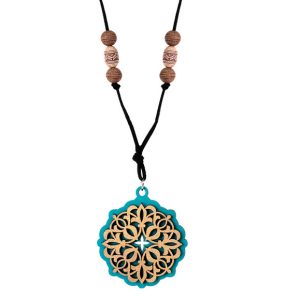 |
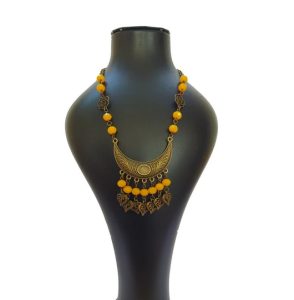 |
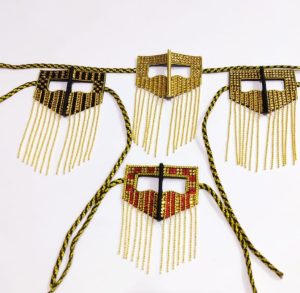 |
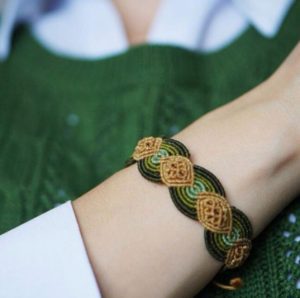 |
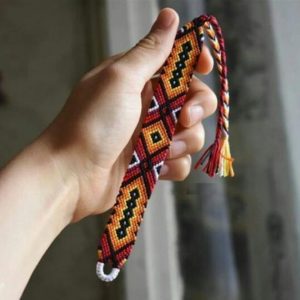 |
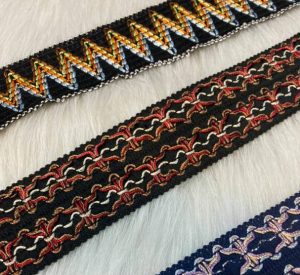 |
Traditional accessories that perfectly match a modern Iranian look
Manto (Long Coat)
Kimono-style mantos with wide, flowy sleeves are a fantastic choice if you’re aiming for a modern outfit with Persian touches. You can use traditional fabrics like Termeh, silk, or Chadorshab for these mantos, and decorate them with iconic Iranian patterns like Eslimi, Khatai, or Boteh Jegheh.
On top of that, abaya-style mantos that are long and loose are also a great pick for a chic, comfy everyday style. You can go with plain fabrics or patterned Persian ones and decorate them with embroidery, beading, or even traditional hand-painting.
Here’s another fun idea: take a super simple manto and pair it with a colorful Persian scarf or shawl. Boom – you’ve got yourself a modern Iranian vibe. You can also throw in a Persian-style belt or bag to complete the look.
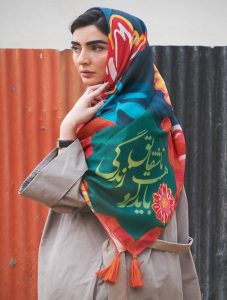 |
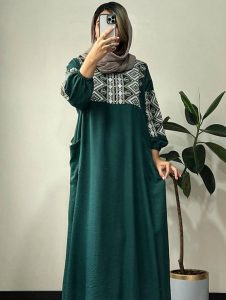 |
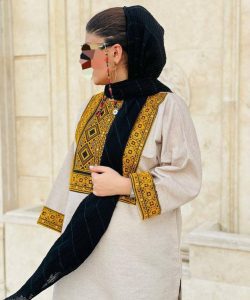 |
| Persian-patterned manto & scarf | Abaya-style manto | Kimono-style manto |
More cool ideas for modern Iranian mantos
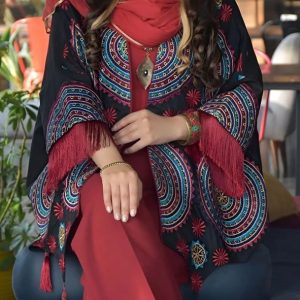 |
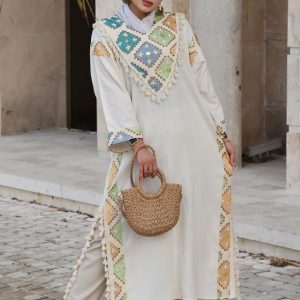 |
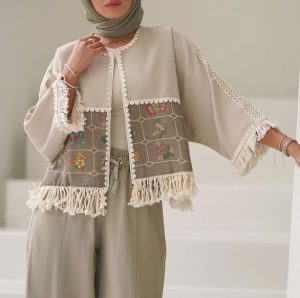 |
Pants
Looking for modern pants with Persian vibes? We’ve got tons of cute ideas for you.
Wide-leg pants that flare out from the knee down are one of the coolest ideas for a modern Iranian style. You can go creative and use traditional Iranian fabrics like termeh, silk, or even chador-shab (woven patterned cloth) to design these pants, then decorate them with Persian motifs like Eslimi, Khatai, or the famous boteh jegheh (paisley).
Straight-Cut Pants:
Straight-cut pants, which fall straight from top to bottom, are a classy and comfy choice for an everyday look. You can sew them with simple or patterned Iranian fabrics, and if you want to level it up, decorate them with embroidery, beadwork, or hand-painted Persian designs.
Red Lines of Style in Iranian Culture?
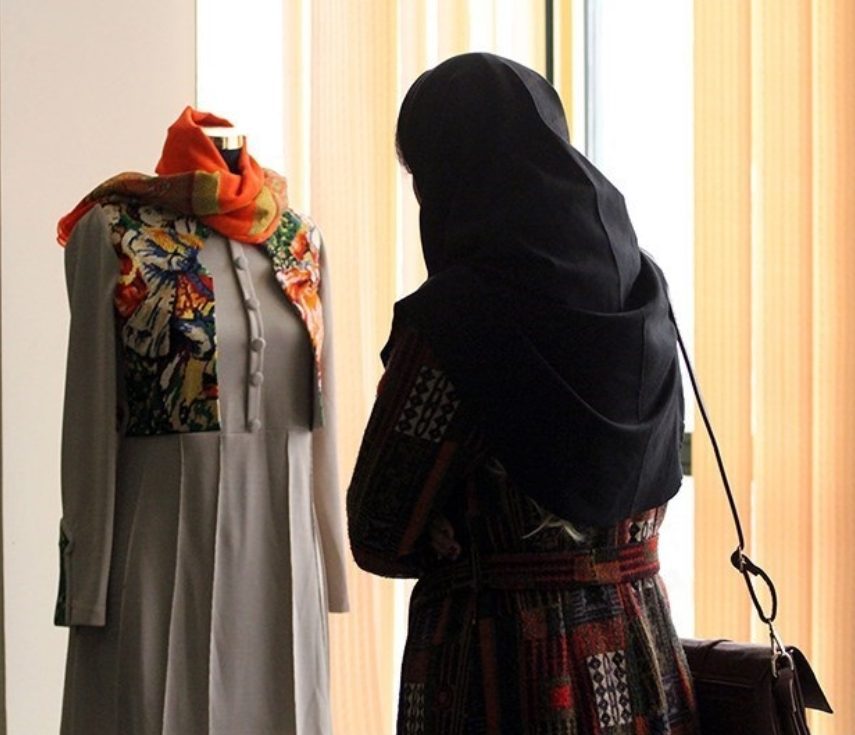
In Iran, there are certain cultural “red lines” when it comes to fashion and style. These rules mostly depend on religion, age, gender, and social status.
For Women:
- Body Coverage: Traditionally, women are expected to cover their shoulders, knees, and chest. This doesn’t mean wearing overly long or super short clothes, but dressing modestly to cover these areas.
- Head Covering: It’s common for women to wear a scarf or shawl to cover their hair.
- Makeup: Wearing makeup is fine, but it’s usually better to avoid heavy or flashy looks.
- Fabric: Thin or see-through fabrics like tulle or satin are not considered suitable for public wear.
For Men:
- Body Coverage: Traditionally, men are expected to cover their shoulders and knees.
- Pants: Super short shorts or overly long trousers aren’t common in Iranian culture.
- T-shirts: Very tight, cropped, or offensive graphic T-shirts don’t match cultural norms.
- Hair: Extremely long or messy hairstyles for men are generally not seen as culturally common.
Best Modern Iranian Fashion Brands You Can Shop From
Alright, no more waiting around! Spring and summer are coming, and it’s the perfect time to upgrade your wardrobe with the most stylish modern Iranian outfits. Here are some of the top brands blending tradition and modern design, all created by talented Iranian designers.
Wrap-Up: Modern Iranian Style – Answering a Century-Old Gap
So here we are at the end of this article. But let’s not underestimate the importance of wearing modern Iranian fashion. Over the past century, Western clothing took over the market, and sadly, the unique Iranian style almost disappeared. That’s a big loss, considering Iran’s thousands of years of cultural history.
That’s why embracing modern Iranian style matters—it combines the elegance and simplicity of modern fashion with the richness of Persian tradition. If you’ve got any questions about styling, feel free to reach out to our experts at Zibanews!
FAQs
What exactly is modern Iranian style?
It’s the blend of traditional Iranian elements with today’s global fashion trends. Basically, a way to stay modest while looking stylish and modern.
What makes it different from other styles?
The use of vibrant colors, Persian patterns, high-quality fabrics, and outfits designed to flatter your body while respecting cultural values.
What pieces are common in modern Iranian style?
Mantos, scarves, shawls, pants, tunics, dresses, bags, and shoes—all designed with a Persian-modern vibe.
How can I build a modern Iranian look?
- Pick outfits that match modest dress codes but are still fashionable.
- Play with bright and cheerful colors.
- Add Persian motifs to your outfits.
- Focus on fabric quality and cuts that fit your body shape.
- Choose clothes that highlight your best features.
Which brands in Iran offer modern Iranian fashion?
Some of the most popular ones include Anar Design, Poosh, Arefeh Mansouri, Naghmeh Kiumarsi, and Radaa.
How can I use this style for different occasions?
It really depends on the event! For a wedding, you can go for a decorated manteau and scarf combo. For a casual get-together, a simple manteau and pants work perfectly fine.

